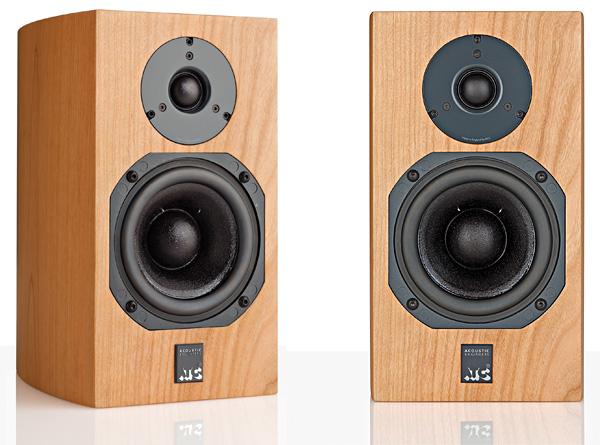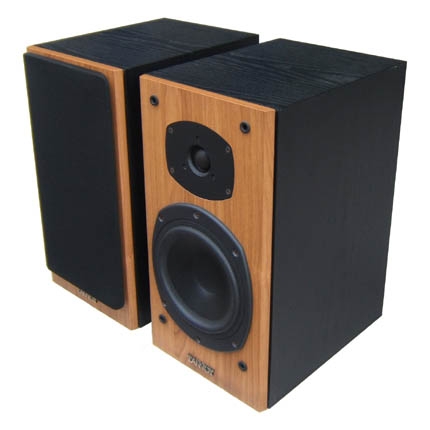This is a review and detailed measurements of the Q Acoustics 3020i bookshelf speaker. It was kindly purchased new by a member and drop shipped to me. It costs US $315 from Amazon including free shipping.
It is so hard for companies to differentiate themselves with budget speakers but Q Acoustics has done it:
View attachment 72184
It is modern but not too European looking for American taste. It also manages to look cute in the process! There is definitely attention to visual design all around.
The binding posts are custom and recessed which is nice. The plastic handles though are a bit hard to tighten but not a big deal. Overall it is very hard to not like the look and feel of the 3020i.
Yes, this is continuing our theme of testing UK designed speakers although this one naturally is made in China.
Measurements that you are about to see were performed using the
Klippel Near-field Scanner (NFS). This is a robotic measurement system that analyzes the speaker all around and is able (using advanced mathematics and dual scan) to subtract room reflections (so where I measure it doesn't matter). It also measures the speaker at close distance ("near-field") which sharply reduces the impact of room noise.
Both of these factors enable testing in ordinary rooms yet results that can be more accurate than an anechoic chamber. In a nutshell, the measurements show the actual sound coming out of the speaker independent of the room.
I used over 800 measurement point which was sufficient to compute the sound field of the speaker.
Spinorama Audio Measurements
Acoustic measurements can be grouped in a way that can be perceptually analyzed to determine how good a speaker is and how it can be used in a room. This so called spinorama shows us just about everything we need to know about the speaker with respect to tonality and some flaws:
View attachment 72186
If you step far enough back, the on-axis response which is most important seems mostly flat. Closer attention though shows fair bit of variations with a rise in the upper frequencies to the right. We also have an unfortunate dip 2 to 4 kHz range of the crossover (2.4 kHz). It also suffers from two dips which seem to be resonances (enclosure or the woofer).
The woofer and tweeter beam widths are mismatched at crossover point resulting in different response off-axis than on-axis:
View attachment 72189
Try to avoid/absorb floor and ceiling reflections if you can (my room has a thick rug).
Putting it all together we get the predicted in-room response:
View attachment 72213
Distortion is well controlled in the tweeter but not so in the woofer:
View attachment 72190
View attachment 72191
Best not let this speaker play too low (see listening sections) as it is merely a distortion generator.
Impedance is low as is typical of these bookshelf speakers so best have a good amplifier to drive it:
View attachment 72193
We see the same problem area at 366 Hz that we saw in the "spinorama" frequency response measurement. The waterfall shows the rest of the resonances:
View attachment 72195
Here are the contributions from each component of the speaker in near-field measurement:
View attachment 72194
I wonder if the crossover point should have been a bit lower. It would have filled that dip more and avoided some of the distortion from the woofer.
Beamwidth horizontally is on the narrow side:
View attachment 72196
But it is also rather uneven so hard to make general statements about it. In listening tests I preferred the speaker fully toed-in toward my ears (post EQ).
Here are our full directivity plots:
View attachment 72197
View attachment 72198
Good to see rather even vertical response so you don't to have the tweeter precisely at ear level.
Speaker Subjective Listening Tests
I listened to the 3020i while the data was being computed so didn't have the benefit of knowing its response in advance. My first "5 second" impression was: "oh, this sounds good.... but wait, it is bright." Not bright in distorted grungy way but just some high frequency energy that almost set off my tinnitus. Further listening to female vocals demonstrated this clearly. I could play really loud with no sign of the woofer bottoming out which is great for a budget speaker.
Continuing to listen provided a mixed message of what the tonality of the speaker was. At this point the measurements finished and I realized the reason was the uneven response which makes the experience content dependent. So I went to work to correct it and this is what I ended with:
View attachment 72199
As usual, please ignore filter band 1 as that is for a room mode and is specific to my situation. You would need to find such a peak in your room using measurements and correct.
Band 2 was a simple fix to high frequency shelving. It nicely got rid of the zing way up which also helped with female vocals. I should say however that I can see how in quick listening such extra brightness may convince one that there is more detail there. You may want to tune this more to taste (and your high frequency hearing ability).
I took a shot at filling the dips in low frequencies (two resonances) but this was not effective. High Q filters were not audible. Low Q ones took away the bass. So I gave up on correcting those, trusting the research conclusion that such narrow dips are likely not audible.
Disturbed by the high distortion in low frequencies, I tried a technique with the last speaker I tested: put in a sharp filter below 40 Hz. To my pleasant surprise, this had big effect on fidelity, increasing detail in frequencies well above its effective range. Clarity improved good deal. I am going to keep experimenting with this but seems like it is best to not let these small speakers to try to reproduce very low frequencies.
Once there, the response was quite pleasant. I toggled back and forth turning off all the filters and the EQ definitely helped. But even without the EQ, I thought the response was fine.
Conclusions
I struggled with how to rate the 3020i. I vacillated between giving it the lower postman panther or the "not bad" one that it finally got. You could have pushed me either way. I find the non-EQ response to barely be offensive (mostly the high frequency exaggeration). So if you are going to build a less than perfect speaker, you might as well do it this way.
Overall, without EQ I can't recommend the Q Acoustics 3020i even though I love the design and some aspects of its sound (e.g. power handling).
------------
As always, questions, comments, recommendations, etc. are welcome.
Typing this on hungry stomach yet again (2:45 pm and no lunch). But I think I have to go out and get a sandwich and need some way of replenishing my funds. So please
donate what you can using: https://www.audiosciencereview.com/forum/index.php?threads/how-to-support-audio-science-review.8150/




